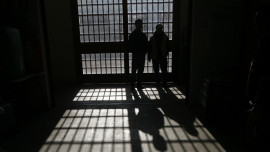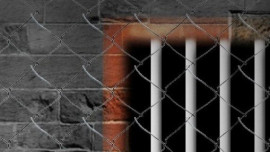1597133096-0/Lahore-Museum-(1)1597133096-0.jpg)
The Lahore Museum houses artefacts from ancient civilisations dating back centuries but contrary to popular belief some of them are replicas rather than originals.
Amongst other significant ancient objects, the star attraction at the Lahore Museum, the dancing girl of Mohenjo-daro, is one of the many replicas that have been preserved in a section of the Lahore Museum dedicated to the Indus Valley and Harappa. Consequently, many visitors of the museum are left disappointed when a closer look at the description of the statues indicates that they are replicas.
Amna Ahmed, a visitor who was walking around the museum, while talking to The Express Tribune about her experience, said that she had spent a lot of time studying these clay antiquities and was sad that she could not look at the originals. “It is exceedingly challenging for the layman to distinguish between the genuine and duplicate statues,” Ahmed remarked.
However, another tourist, Muhammad Shahbaz, opined that a majority of visitors did not care if the artefacts were original or duplicates.
“Only those who are fond of history, appreciate art, or are buyers of antique artefacts want originals. Even the duplicates give us the chance to learn more about civilisations of a bygone era.” The Express Tribune asked Asim Rizwan, Deputy Director of the Lahore Museum, as to why there were replicas in the museum despite there being a law preventing duplicates of antiques.
“This is due to a number of factors. Sometimes we locate just one piece of a really rare artefact, and usually, the local museum has the first claim to that piece. Therefore, those originals remain with that museum. For instance, the originals of the replicas we have here are kept in the Harappa Museum,” Rizwan replied, adding that the Buddhist, Jain, and Hindu artefacts, particularly Buddha sculptures, in the museum, were all genuine. As far as the law is concerned, Rizwan informed that it was true that there were laws in Pakistan regarding the replication of rare creations, including paintings, books, and artwork but they are not implemented.
“That is why in Lahore con artists make huge sums of money by duping people into believing they are selling real ancient artefacts,” he said, adding that any professional could quickly distinguish between originals and duplicates. Dr Muhammad Hameed, Head of Punjab University’s Department of Archaeology, when asked about this lack of implementation, said that it was legal to create replicas in Pakistan or anywhere in the world but a license is required.
“There are also several requirements for making duplicates, like the copy cannot be manufactured from the same materials as the original. Furthermore, there is a requirement to indicate that the item is a replica. Unfortunately, no one really cares in Pakistan,” Dr Hameed told The Express Tribune.
Published in The Express Tribune, December 2nd, 2022.

1731570357-0/elon-musk-(1)1731570357-0-405x300.webp)
-(1)1717678110-0/Kendrick-(1)-(1)1717678110-0-165x106.webp)















COMMENTS
Comments are moderated and generally will be posted if they are on-topic and not abusive.
For more information, please see our Comments FAQ